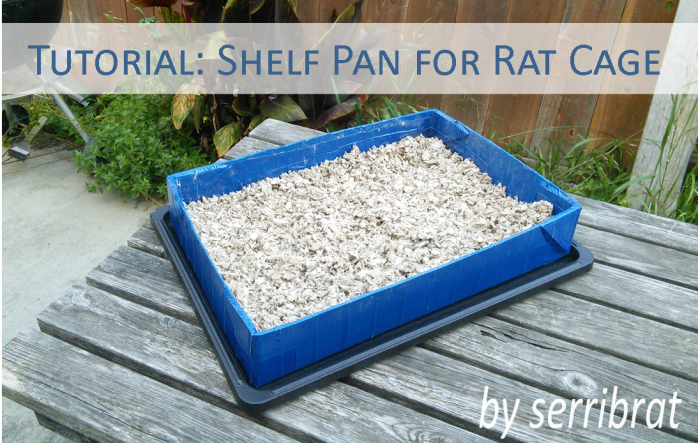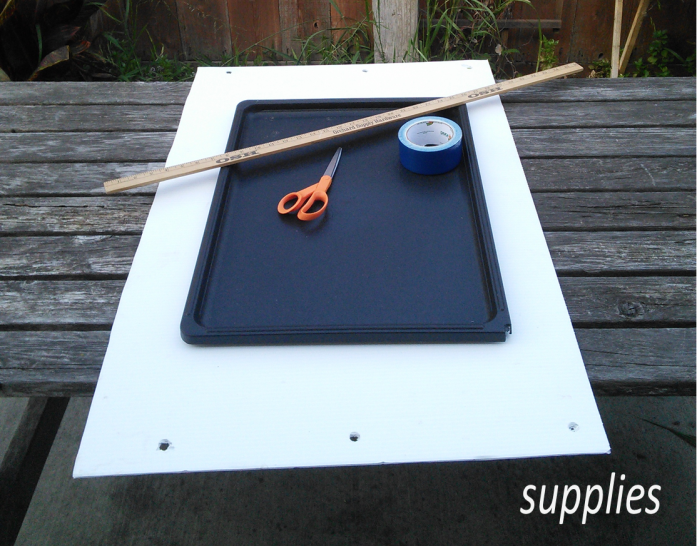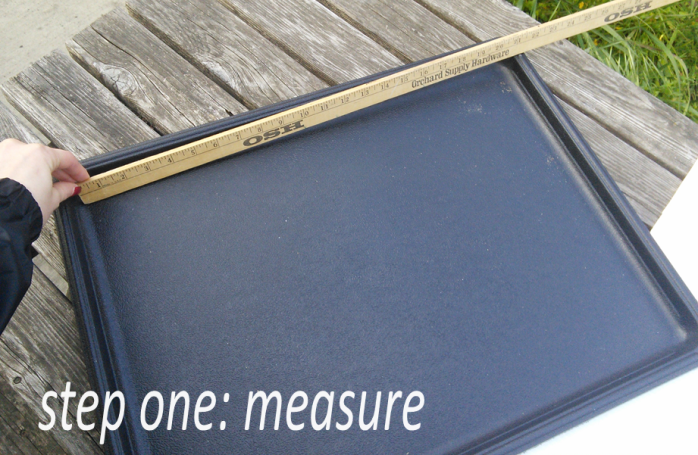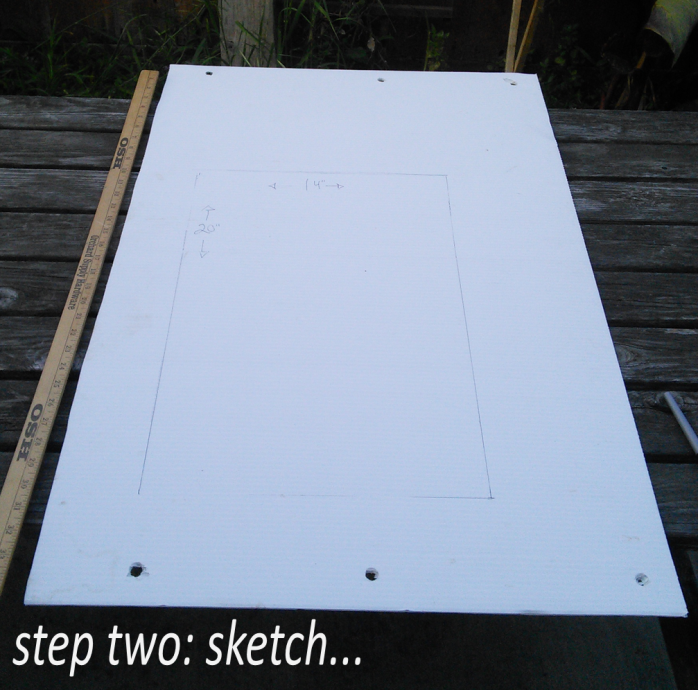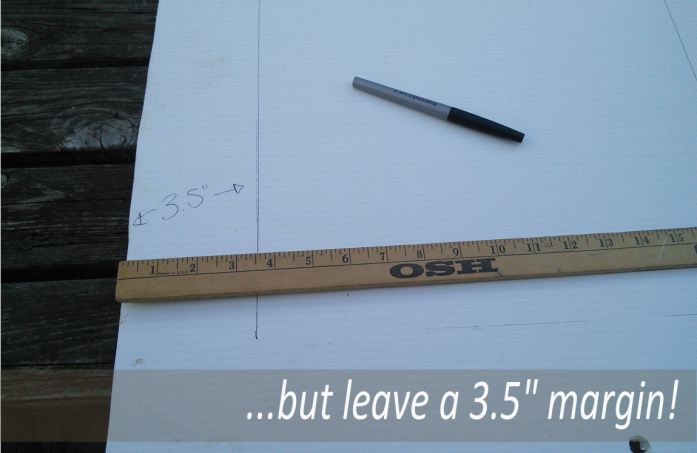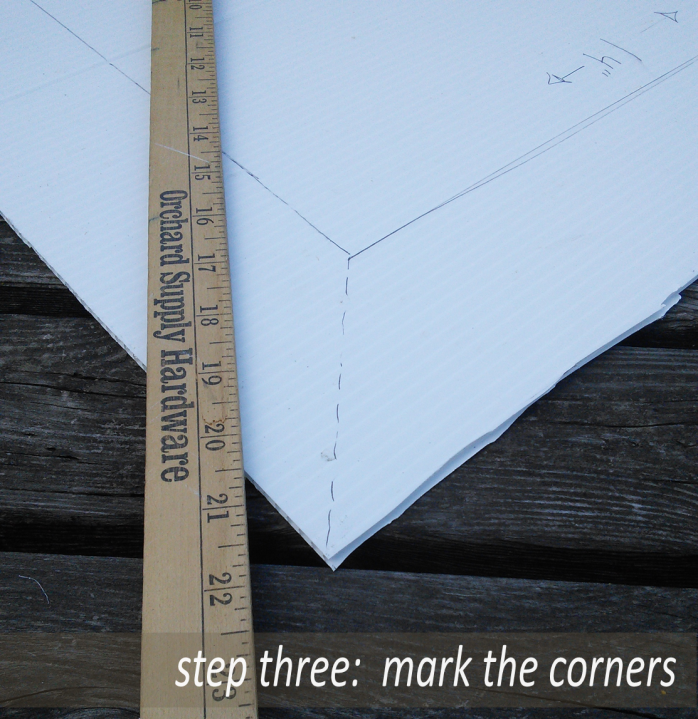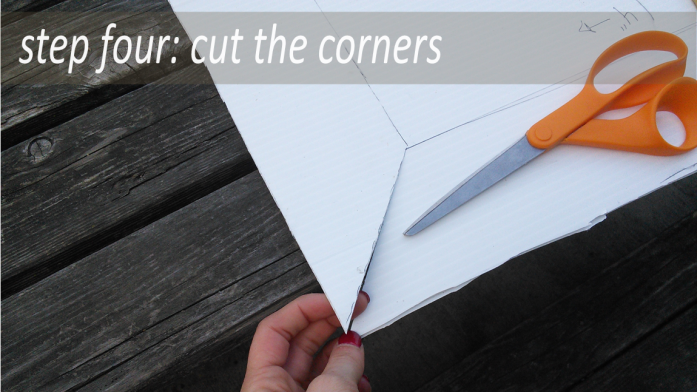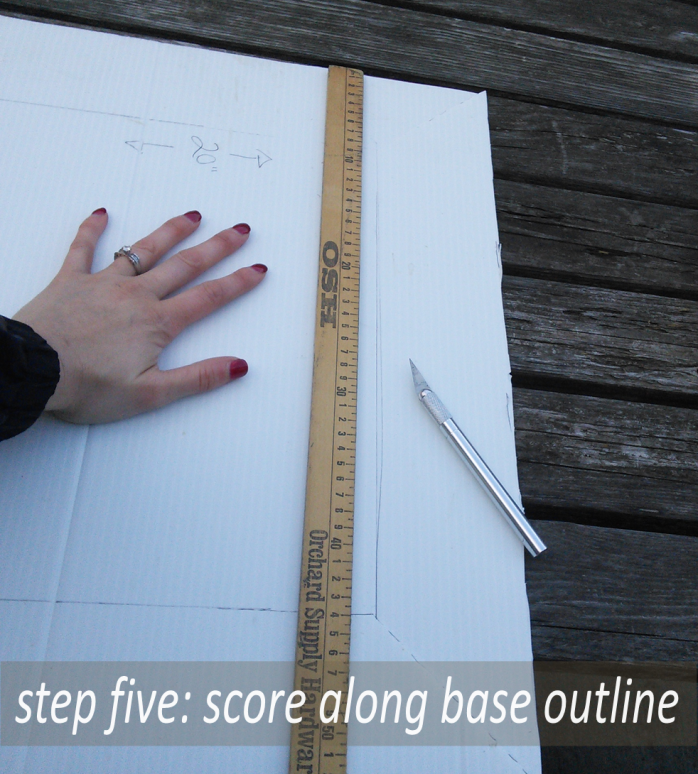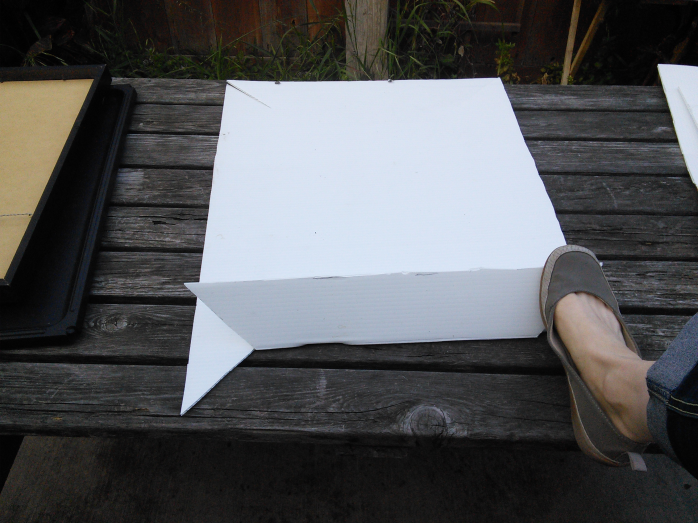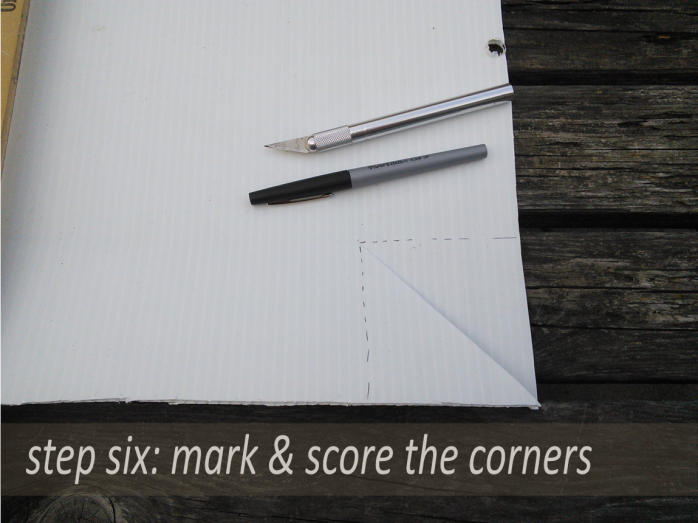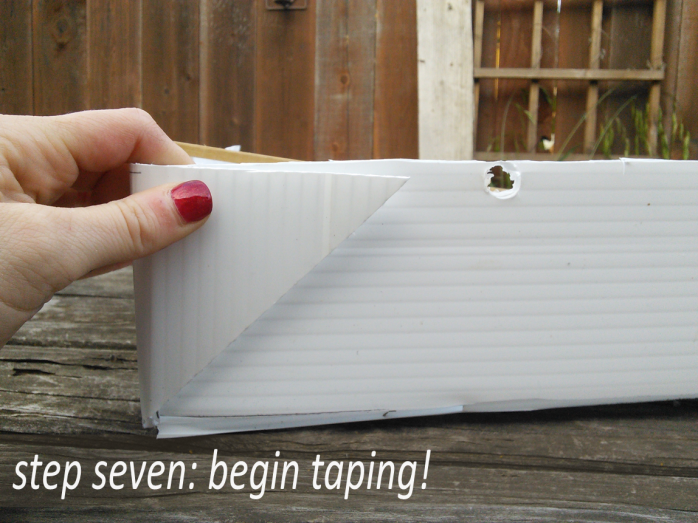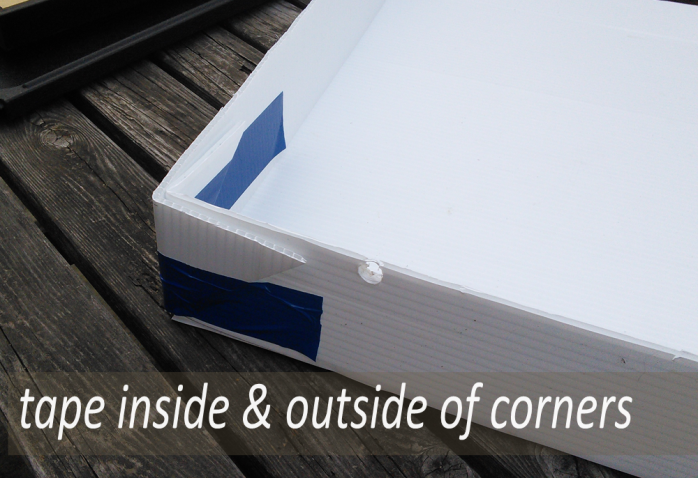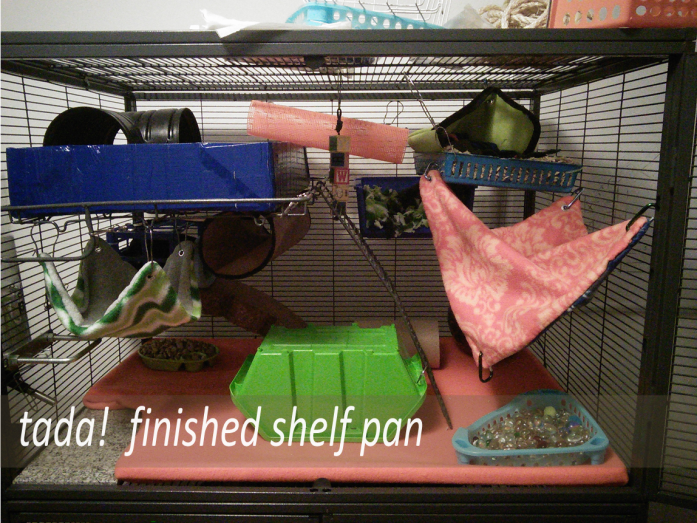Shelf pans are a good option if you want to give your rats substrate materials to dig around in instead of fleece-lined shelves. Of course, there are some really good pans on the market, but they tend to be expensive.
The custom shelf pan shown here is affordable, quick, and easy to custom fit to your cage. I fit mine to the dimensions of a critter nation shelf, but you can make any size.
Supplies and tools:
- One sheet of corrugated plastic (I got a 72”x36” sheet from Home Depot for about $14)
- Marker
- Yard stick or measuring tape
- Duct Tape
- Scissors and/or utility knife
Step one: Measure the dimensions of the shelf that you want your pan to rest on. My critter nation shelf is 20” long by 14” wide. Notice that I’m measuring the inside surface area of the shelf where the pan will sit and not including the raised edges. These measurements will provide the floor area of your shelf pan.
Step two: Using your yardstick, sketch the dimensions of your pan onto the corrugated plastic sheet…
…leaving at least 3.5” around the outline. These extra inches will fold up to become the walls of your shelf pan.
Step three: Mark the corners as shown. You want a straight diagonal line from the corner of the floor outline to the edge of the corrugated plastic.
Step four: Along the diagonal corner markings, carefully cut through the corrugated plastic with your scissors or utility knife. (This is the only time you’re allowed to “cut the corners” in one of my tutorials…har har.)
Step five: Now you’re ready to score the corrugated plastic along edge of the floor. You don’t want to cut all the way through – simply mark it lightly enough to leave a cut line. Then, you can easily bend along the cut line as shown below.
(Note – you don’t have to use your feet like me!)
Step six: Mark the corners again to make a square in each corner as shown. Gently score along the marked lines to create a shallow cut. Then fold the corners as shown.
Step seven: Now the duct tape! Begin by taping the corners together. You may want to get someone to help you do the first one or two because it can be tricky by yourself.
For the corners, tape inside and out of the pan. Make sure there are no sharp edges on the plastic that might cut little ratty hands. If you find anything sharp, simply place a piece of duct tape over that part. You can keep adding duct tape if you want to finish the walls, but it’s not really necessary.
Tada! The finished pan may include duct tape around all the walls as depicted. I left the surface of my floor plain without duct tape. My pan lasted for several months – to make your pan last longer, clean it regularly by wiping it down with a wet cloth or by washing with a gentle soap. You should also monitor the pan for any chewing and replace the duct tape if necessary.
Enjoy!
